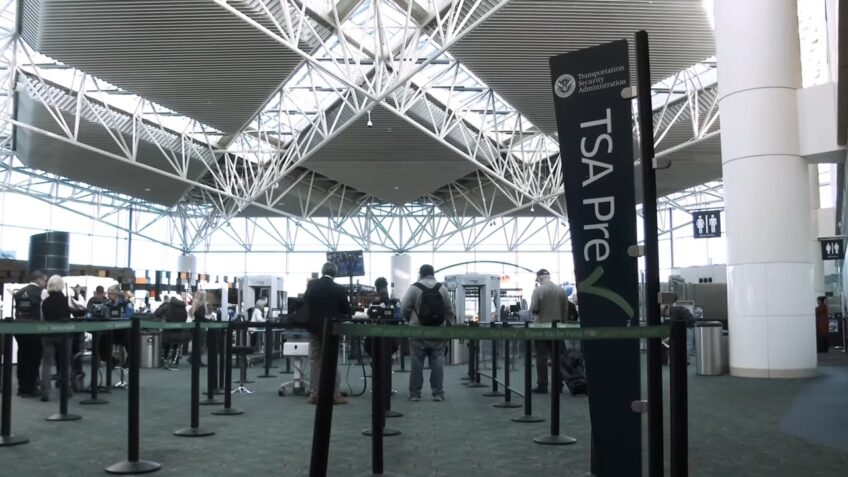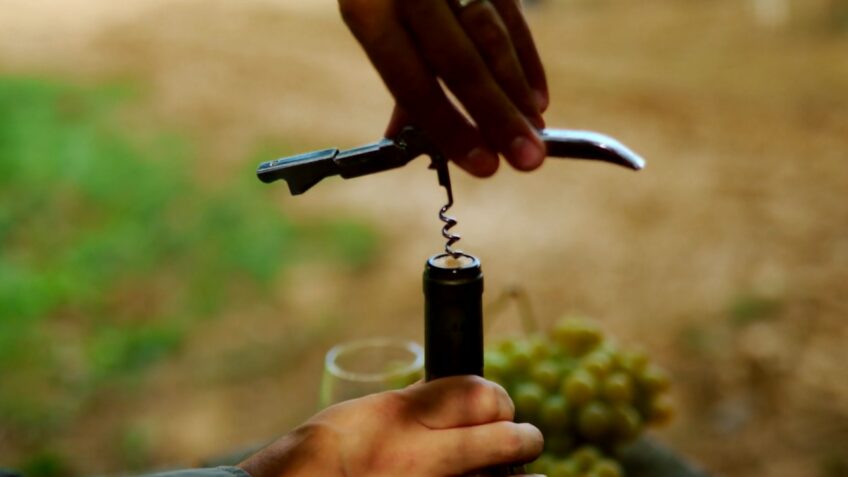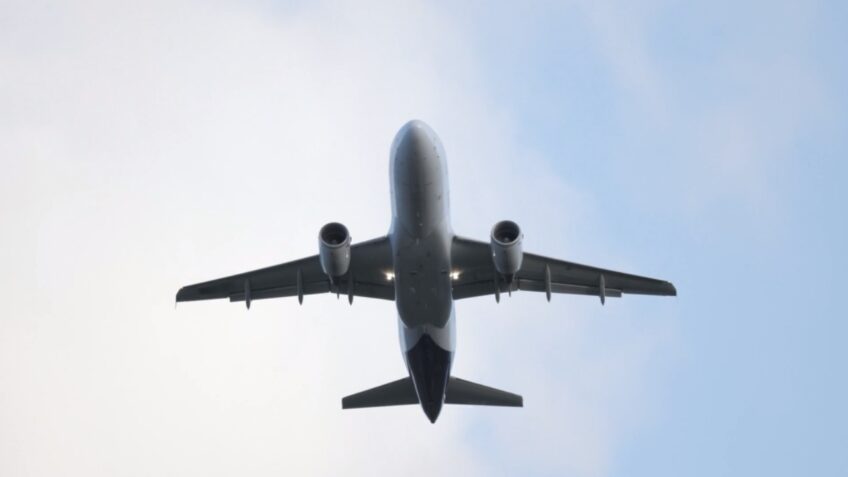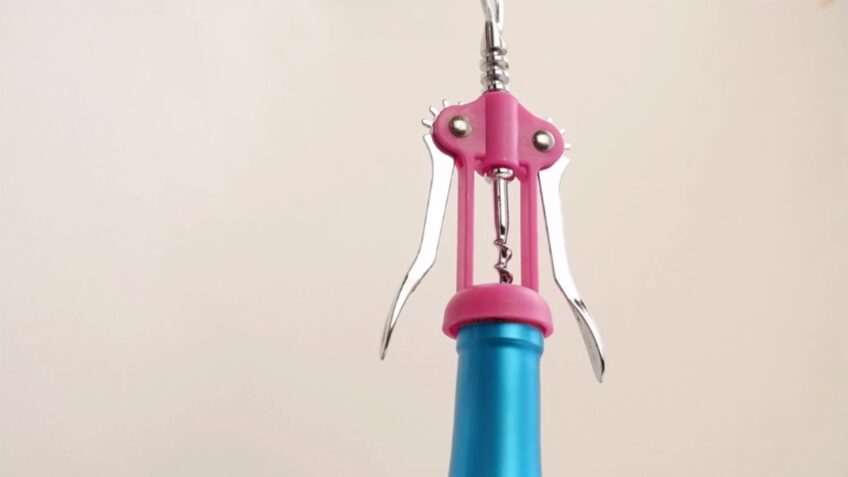Traveling is a passion for many, a chance to explore the far reaches of our world. Alongside this zeal for new experiences often comes a love for taste exploration, a venture into the heart of global culinary culture – and what’s a sumptuous French Coq au Vin or a hearty Italian Osso Buco without a glass of perfectly paired wine?
The avid oenophiles among us might wonder: can we carry our trusted wine openers aboard a plane? Will they pass through the security checks, or will they be banished to the black hole of confiscated items? Fear not, fellow travelers and wine enthusiasts, as we embark on a journey to unravel these mysteries!
TSA’s Standpoint

The Transportation Security Administration (TSA), the U.S. agency responsible for maintaining travelers’ safety, has the final say about what items are permitted or forbidden on board. They’ve provided a comprehensive list of these items on their website to quell passenger queries, including the pressing one about our humble wine opener.
The good news? If your wine opener is a traditional, screw-pull model – the kind you would find in any kitchen – it’s allowed in your checked baggage. The bad news? If your wine opener comes with a blade, even a small one, it’s prohibited in your carry-on luggage. As of my knowledge cutoff in September 2021, the TSA rules explicitly state that corkscrews with blades are not permitted in carry-on luggage.
In a nutshell, the policy about wine openers is not black and white. It largely depends on the type of wine opener you own and the particular security agent reviewing your carry-on. The key takeaway? When in doubt, pack it in your checked luggage.
Exploring Different Types of Wine Openers

Let’s dive a little deeper into the world of wine openers to better understand TSA’s stance. Here are some common types:
- Waiter’s Friend: Known as the sommelier’s choice, this compact tool features a small knife to cut the foil on wine bottles, a lever, and a spiral worm to uncork. Because of the blade, it’s likely to be a no-go in a carry-on.
- Winged Corkscrew: This one’s a classic. With its two levers (wings) and worm, it’s simple to use and doesn’t include any blades, making it a good bet for carry-on approval.
- Lever Corkscrew: Also known as a rabbit corkscrew due to its distinctive shape, this opener is convenient and efficient but often includes a foil cutter, which, again, is a blade and could be problematic.
- Electric Wine Opener: This modern tool uncorks your wine bottle at the press of a button. Without any blades, it should theoretically be fine for carry-on.
Pairing wine with brisket can be an enjoyable and rewarding experience, as finding the perfect complement to this flavorful meat can elevate your dining experience to new heights.
Strategies for Traveling Wine Enthusiasts

For those whose passion for wine doesn’t pause at 35,000 feet, here are some practical strategies:
- Choose Bladeless: Opt for wine openers without blades, such as a winged corkscrew or an electric wine opener. This way, you reduce the chances of confiscation at the security checkpoint.
- Pack It In Checked Baggage: To be on the safer side, pack your wine opener in your checked baggage. Remember, if it’s in your checked luggage, even a wine opener with a blade is permissible.
- Buy When You Arrive: Consider purchasing a wine opener at your destination. This way, you avoid any issues with airport security and expand your wine opener collection.
- Go Disposable: Disposable wine openers are a good option for travelers. They’re cost-effective and light, and you won’t lose sleep if they’re confiscated.
In Vino Veritas: A World Beyond Openers
An important note to keep in mind is that while you may be able to bring a wine opener on a plane, you can’t carry on bottles of wine beyond the liquid restrictions. As of the latest TSA guidelines, you can only bring mini bottles of less than 3.4 ounces (100 milliliters) in your carry-on, provided they fit in a single, quart-sized plastic bag.
Larger wine bottles, however, are welcome in your checked baggage. The caveat? Be sure to secure them well to avoid an unfortunate and messy incident.
When it comes to the flavors and characteristics of certain wines, like the popular strawberry wine, there is a lot to explore and discover.
A Closer Look at TSA Guidelines

The TSA’s guidelines about wine openers in carry-on luggage aren’t just pulled out of a hat; they’re driven by a focus on safety. Any item that could potentially be used as a weapon is thoroughly scrutinized. A wine opener with a blade, regardless of its size or the fact that it’s part of a corkscrew, falls under this category. This, in essence, is why the classic Waiter’s Friend might have to travel in the belly of the plane rather than with you in the cabin.
At the same time, TSA recognizes the harmless nature of most wine openers. The typical winged corkscrew or electric wine opener isn’t seen as a security threat, and hence, they’re generally allowed in carry-on luggage. However, final discretion lies with TSA officers, so there’s always an element of unpredictability.
International Guidelines
While this article primarily focuses on TSA regulations applicable in the United States, it’s worth mentioning that rules can vary internationally. Many countries follow guidelines similar to TSA’s, but exceptions may exist.
For example, some airports in the European Union allow corkscrews in hand luggage, even those with small blades. Meanwhile, in other parts of the world, the rules may be stricter. As a rule of thumb, always check the specific regulations of the airports you’ll be transiting through to avoid any unpleasant surprises.
Wine Opener Alternatives
Should you find yourself in a situation where you can’t bring along your trusty wine opener, don’t despair! There are numerous alternatives that can help you uncork your bottle:
Shoe Method
Yes, you read that right. This method involves placing the bottom of the wine bottle in a shoe (to cushion and protect it), then hitting the shoe against a wall. The pressure gradually forces the cork out. Be warned: this method requires patience and careful handling!
Push-In Method

With a blunt instrument like the end of a wooden spoon, you can push the cork into the bottle. While this isn’t ideal (the cork floats around in the wine), it’s a decent last resort.
In the culinary world, there are various alternatives that can be used as substitutes for red wine in cooking, allowing you to explore a range of delicious flavors and experiment with different ingredients.
Screw and Pliers
A household screw can be twisted into the cork, and then, using pliers or the back of a hammer, you can pull the cork out.
Each of these methods has its pros and cons, and none is as convenient as a wine opener. They do, however, attest to human ingenuity when it comes to opening a bottle of wine!
Wrapping Up

Navigating airport security with your wine paraphernalia doesn’t need to be daunting. With the right information and a dash of preparation, you can elevate your travel experience by toasting to a beautiful sunset or a starry night from your hotel balcony with a glass of local wine in hand, uncorked by your trusty wine opener. Here’s to the joy of discovery, both in travel and in every sip of wine! Cheers!

